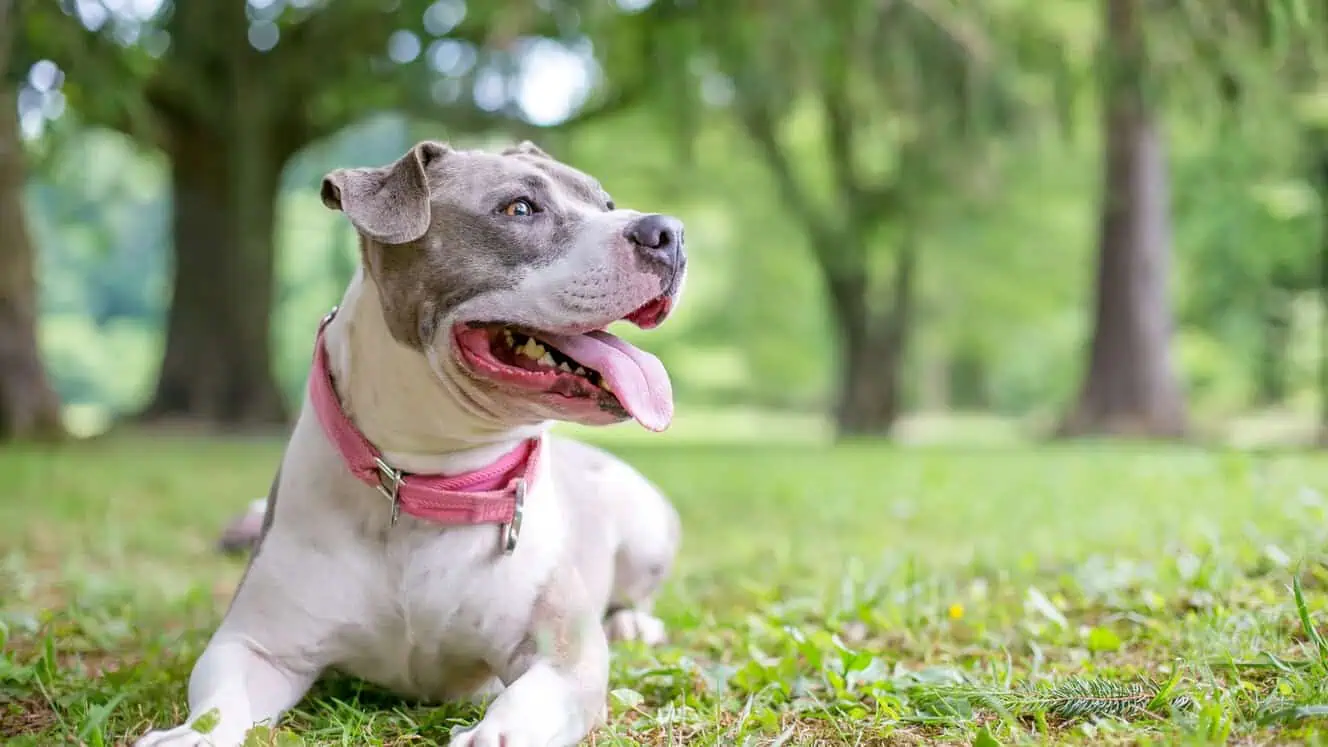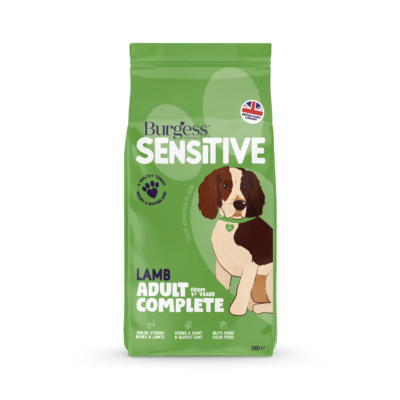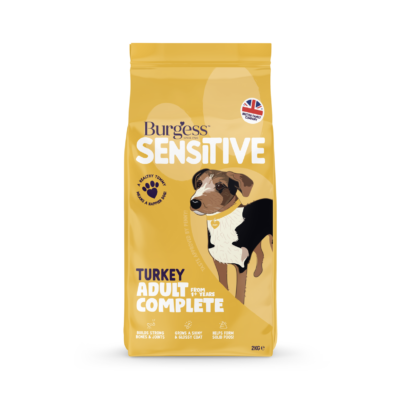
With their strong, stocky bodies, smooth coats and big smiles, Staffordshire Bull Terriers consistently remain high in the dog breed popularity charts, despite receiving some unjust bad press in recent times. “Forget what you’ve read: Staffies aren’t tough, they’re just tough not to love,” affirms rescue and rehoming charity Battersea.
According to The Kennel Club, the Staffordshire Bull Terrier shares the same ancestry as the Bull Terrier, which was developed in the 1860s by James Hinks who crossed Bulldogs with Terriers and other breeds to develop a new type of dog for vermin control and sport. Developed in the Black Country of Staffordshire and northern parts of Birmingham, the breed was first officially recognised in the 1930s.
Importantly, as The Kennel Club notes: “Despite its rough and ready beginnings, the Staffordshire Bull Terrier is known as a wonderful family pet. Their intelligence and affinity with children are noted in the breed standard.”
Staffies love all their hoomans!
In fact, affectionately nicknamed the ‘nanny dog’, the Staffordshire Bull Terrier is one of the Kennel Club’s top recommended breeds for families with children. Ali Taylor, Head of Canine Behaviour at Battersea and star of ITV’s For the Love of Dogs says: “Staffs are great family dogs. Many breeds tend to bond with one individual, but Staffs bond with the entire family. They love everyone equally, with equal enthusiasm!”
Along with their loving ways, Staffies can, however, sometimes be headstrong and wilful. Insurer Petplan advises: “Whilst they are people pleasers, Staffies can be stubborn and impulsive at times and are best suited to more experienced owners.”
What’s the best food for a Staffordshire Bull Terrier puppy? >>
Staffordshire Bull Terrier health concerns
While generally a healthy breed, there are some health concerns to consider. Staffies can suffer from eye disorders, patella luxation (where the kneecap pops out of its groove) and. cruciate ligament disease (where the ligament inside the knee joint slowly frays and gets weaker). They can also experience skin disorders.
Petplan advises: “Like other dogs, Staffies can suffer from allergies that lead to dermatitis (skin inflammation). Allergies can be caused by many different items, including things that are inhaled (such as pollen or dust mites), items that are eaten (for example, wheat), items that the dog comes into contact with (for example, washing powders), or bites from parasites such as fleas.”
What’s the best food for Staffordshire Bull Terriers? >>
Dog Trust advises: “Whatever the breed, all dogs need basic preventative health care like vaccinations and flea and worming treatments. You’ll also need insurance to help cover the cost of vet bills.”
Understanding what makes your Staffordshire Bull Terrier tick will help you give them everything they need to love life! Read on to discover more about:
- STAFFORDSHIRE BULL TERRIER PERSONALITY PROFILE
- IS MY HOME SUITABLE FOR A STAFFORDSHIRE BULL TERRIER?
- HOW MUCH EXERCISE DOES A STAFFORDSHIRE BULL TERRIER NEED?
- WHAT SHOULD I FEED A STAFFORDSHIRE BULL TERRIER DOG?
- HOW MUCH GROOMING DOES A STAFFORDSHIRE BULL TERRIER NEED?
- WHAT’S THE BEST WAY TO TRAIN A STAFFORDSHIRE BULL TERRIER?
- GETTING A STAFFORDSHIRE BULL TERRIER
STAFFORDSHIRE BULL TERRIER PERSONALITY PROFILE
Describing the breed as: “Bold, fearless and totally reliable,” The Kennel Club adds that Staffies are: “Traditionally of indomitable courage and tenacity. Highly intelligent and affectionate especially with children.”
“Loyal and loving with a great sense of humour, an easy dog who makes an ideal pet for most owners,” comments Your Dog.
Wendy Kruger, dog behaviour and training specialist at Wood Green adds: “Staffies are devoted to their families – adults and children alike – and if you show a Staffie love and affection, you will get double the love back. Contrary to popular belief, Staffies are surprisingly sensitive. They will crave your attention and companionship. They want nothing more than to be your faithful best friend.”
While Staffies are devoted, people-loving dogs, like other Terriers, they can be suspicious of other canines.
“Some Staffies are known to be a little wary of other dogs as they much prefer the company of people, but as long as they are well-socialised from a young age they should get along fine,” advises PDSA. “Don’t be surprised if your Staffie would rather say hello to other owners instead of their dogs! It would probably benefit your Staffie to go to puppy socialisation groups, so they get used to other dogs from a young age.”
Veterinary Surgeon Edward Davies of My Family Vets adds: “Staffies aren’t the biggest fans of other dogs, so it’s best to keep them on the lead when you’re out walking. This characteristic will depend on the individual dog, of course – Staffies are often friendlier than they’re expected to be, although they can be unpredictable and aren’t known to back away from a fight.”
While Staffies have unfairly endured a bad reputation, this trait of ‘not backing down’ is true of all Terriers. Britannica states: “Noted for their spirited personalities, Terriers were bred to find and kill vermin and to guard homes and barns. Bred to confront prey that often fought back, they are sometimes quarrelsome with other dogs. All Terriers are vocal and inclined to chase and confront.”
Staffies are lovers not fighters
However, Staffies are far from the ‘dangerous dog’ that the media has often portrayed in recent years.
Ali Taylor, Head of Canine Behaviour at Battersea, explains further: “The truth is that any dog can be trained to be aggressive by irresponsible owners, including otherwise gentle breeds such as Staffordshire Bull Terriers – but with the right owners and environment, they make loving pets. Staffies love to please. A good trait, but one that can be exploited. They’re famous for their eagerness to please, so no matter how badly they’re treated, they will still try to do what their owners want. But they’re not born fighters. Quite the opposite!”
To give their image a refresh, Battersea has even launched a ‘Staffies – Softer Than You Think’ campaign to reconnect people with these often-misunderstood dogs and encourage their adoption from rehoming centres.
Wood Green is also trying to give Staffie PR a boost. Wendy Kruger of Wood Green adds: “Sadly in recent years, the Staffie’s physical similarities with Pit Bulls means people are often wrongly frightened of them. Sensationalism in the media leads to people overlooking or avoiding this once loved and treasured breed. That’s why we launched the ‘Give Staffies a Chance’ campaign. Rehoming centres like ours are seeing significant increases in the numbers of Staffies coming through our doors. If you’re thinking of rehoming a dog, consider rehoming a Staffie – they really do make excellent pets.”
Battersea notes: “Often misunderstood, most Staffies really only need two things in life: human company, and playtime. Here at Battersea. we know that they are more likely to flash you a trademark smile than anything else. Staffies are also known for being patient with younger members of the family.”
Burgess is also doing its bit. In 2022, the company launched a new dog food variety – Supadog Rich in Salmon – featuring an on-pack image of Jess, a two-year-old, rescued Staffie Cross. For every bag sold, 20p is donated to dog rescues across the UK in the form of free food.
Crate training a Staffordshire Bull Terrier puppy – make it their special place >>
Whatever the breed, every dog is unique
While each breed has certain identifiable traits, it’s important to remember that every dog is unique.
Dogs Trust says: “Just like you, every dog is an individual with their own personality and prior experiences. As dogs grow from puppies, they learn all about the world. They develop their own likes and dislikes and learn to respond to situations in different ways. For example, some dogs might like meeting other dogs, and some may not. Some might like new experiences and others may need to go slowly.”
Want just YOUR dog to come when you call them? Choose their name wisely! >>
IS MY HOME SUITABLE FOR A STAFFORDSHIRE BULL TERRIER?
To create a perfect canine/human partnership, it’s vital to think about what kind of energy and temperament you’d like your four-pawed friend to have so you’re a good match for each other – and that you can provide a suitable environment.
The Kennel Club recommends that Staffies are quite happy in a small house with a small/medium garden in a town or country setting – although you’ll need a decent boundary. “They are jumpers!” warns PDSA. “Some Staffies can jump really high, so make sure you have a tall fence.”
They also do best when someone is home most of the time. PDSA advises: “Because they are so people-orientated, Staffies are known to suffer with separation anxiety when left alone. You should never leave any dog alone for more than four hours, but you might find your Staffie struggles with shorter periods than this and you might need to train them to be OK with very short periods.”
Be aware that if you have a Staffie, as with all Terrier breeds (Terrier comes from the Latin terra, meaning 'earth' so the clue is in the name), your garden could take a battering.
Veterinary Surgeon Edward Davies of My Family Vets advises: “They like to dig (they’re Terriers after all), so if you plan to let your Staffie out into the garden, make sure it’s securely fenced off and that you supervise your Staffie as best you can.”
As a Terrier breed, Staffies are not suited to sharing their home with small furries. PDSA advises: “Staffies have a very strong prey drive so it’s not a good idea to have smaller pets around them. If they have grown up with another pet in the home, they may get used to them, but never leave your dog unsupervised with other pets. Remember to keep a tight grip on their lead on walks in case they see something that looks fun to chase!”
Staffies also generally prefer to be the solo star attraction of your home. Petplan says: “Whilst they are friendly with people, Staffies can be competitive with other dogs which can lead to hostile behaviour. Early socialisation is key for a well-rounded, sociable dog, but this is a breed that usually does best in a single dog household.”
Which breed of dog is the right fit for you and the place that you live? >>
Staffies and children can be great friends
“Generally speaking, Staffies tend to be very tolerant and sweet-natured towards children,” says PDSA. “This said, they are very high energy and often don’t realise their own strength, so they might not be suited to families with younger children. It’s important to always supervise your Staffie with children and vulnerable adults to avoid any accidents and stop playtime if they get a little too excitable.”
“Staffies do best in the heart of the family and will happily join in with everything and anything,” adds Petplan. “Staffies love children but should always be supervised in case they get too boisterous.”
“Every dog has their own unique personality that has been shaped by their own experiences of the world,” advises Dogs Trust. “They’ll have their own likes and dislikes and will respond to situations in different ways. However, there are some universal ways to behave safely around them and treat them with respect.”
The family dog – making it work for pets and children >>
HOW MUCH EXERCISE DOES A STAFFORDSHIRE BULL TERRIER NEED?
If you’re an active type who likes to be out in the fresh air as much as possible with a canine chum by your side. then a Staffy could fit the bill.
“Staffordshire Bull Terriers are typically high-energy dogs who need lots of exercise to keep them physically and mentally healthy,” says Dogs Trust. “They'll need daily walks, plus plenty of time and opportunity to explore, burn energy, and play. Like all dogs, they will need training and will benefit from daily enrichment. If you love spending active time outdoors, this breed could be a great match for you.”
Veterinary surgeon Edward Davies of My Family Vets says: “Staffies tend to have bags of energy and will gladly accompany their owner on as many as three walks a day. As a minimum, your Staffie will need two walks a day with some energy-filled playtime in the middle.”
“Not for the idle owner, Staffordshire Bull Terriers are extremely active and energetic dogs and need around two hours exercise per day,” advises Petplan. “Staffies love to run, but make sure you’re in a secure area before you let your dog off the lead. Staffordshire Bull Terriers are mouthy dogs, which means they love to chew. A game of frisbee will give your Staffy a good run around whilst also giving them something strong to chew on.”
Wendy Kruger of Wood Green says: “Staffies are strong, athletic, agile and active dogs that require daily walks and a regular routine. They are fun-loving and will happily spend hours playing pulling games or chasing a ball to fulfil their need of hard exercise, so you’ll need plenty of free time and a good supply of toys!”
Battersea adds: “Many Staffies are full of energy and love nothing more than to play games and run around with their owners. They will happily play with toys in short energetic bursts before lying down for a cuddle and a snooze.”
How much exercise do different dog breeds need? >>
WHAT SHOULD I FEED A STAFFORDSHIRE BULL TERRIER?
To keep your Staffie healthy and happy, choosing a balanced diet that suits them and meets all their nutritional needs is essential.
“Staffordshire Bull Terriers can be prone to food allergies so choose their food carefully and check with your vet for specific advice if you are having issues with your dog and their diet,” advises Petplan. “Staffies can be susceptible to bloat, a condition that can be very painful for your pet. To avoid this, space exercise and food an hour apart and be sure not to overfeed.”
Burgess in-house vet, Dr Suzanne Moyes MVB MRCVS, who oversees recipe development and product production, advises: “When choosing food for Staffordshire Bull Terriers, it’s essential to bear in mind that the optimum diet for your dog is one that supplies the correct number of calories and balance of nutrients for their life stage and lifestyle. This means calculating the nutrient content and dietary components such as protein, fat, carbohydrate and vitamins and minerals required. All Burgess Dog Food is a complete food. This means, whatever variety you choose for your Staffie, it will contain all the nutrients they need in the correct balance.”
The benefits of feeding a diet specially developed for a sensitive digestion
And, as Staffordshire Bull Terriers can be prone to food allergies, choosing a food that’s specially designed for sensitive digestions could be beneficial.
Dr Moyes adds: “Dogs with delicate digestion or who suffer from allergies need sensitive dog food that’s made without many ingredients known to cause upset tummies. These ingredients can include beef, eggs, dairy, wheat, maize, and soya. For many canines with digestive issues or allergies, switching to a sensitive or hypoallergenic variety, depending on what your vet recommends, can make a world of difference to them.”
Your Staffie will also benefit from feeding a variety of food that’s designed to meet their nutritional requirements throughout their life. Puppies need extra energy and other nutrients to support rapid growth. For adult dogs, providing a nutritionally balanced, complete diet will help keep them in tip top condition during the prime of their life. Many older dogs develop specific conditions, such as arthritis – some of which can be eased by feeding a diet designed just for them.
“Your Staffies’s diet will vary depending on their age,” recommends PDSA. “You’ll need to feed them a complete, balanced dog food to keep them slim and healthy. Your vet will be able to tell you how much your Staffie should be eating. You should feed them a good quality, commercially available, complete dog food. We usually recommend splitting their daily allowance into two meals. If you give your dog the occasional treat or use treats for training, remember to take this into account and reduce their daily allowance. Treats shouldn’t make up more than 10% of their daily calorie intake as this can unbalance their diet.”
The charity also notes: “Staffies are known to be able to sniff out leftovers or scraps dropped on the floor, so keep a close eye on them when there’s food around and don’t leave them unattended in the kitchen!”
Human food that you should never give to dogs >>
HOW MUCH GROOMING DOES A STAFFORDSHIRE BULL TERRIER NEED?
Staffies have easy-to-manage coats that come in a range of colours. These include black and tan, fawn, blue, red, white, liver and brindle.
“When it comes to grooming, Staffies are reassuringly low maintenance,” says Battersea. “As they have a short, single layer coat, Staffies require minimal grooming to keep them looking great. They don’t need their fur clipped, and a regular quick brush will remove any shed fur and help keep it off your sofa.”
Dogs Trust advises: “To help your dog feel comfortable with handling and grooming, introduce it in a positive way, one step at a time. Teaching your dog to feel relaxed and confident will make grooming more enjoyable for everyone.”
Regular teeth cleaning is also important to help to prevent plaque and tartar from building up and keep gums healthy.
WHAT’S THE BEST WAY TO TRAIN A STAFFORDSHIRE BULL TERRIER?
When it comes to training any dog, it’s all about positive learning, and, with Staffordshire Bull Terriers, there’s plenty to work with! Training and socialisation from a young age with different people, dogs and experiences is essential to help your Staffie become a confident dog, happy to go out and about.
PDSA says: “Staffies are intelligent dogs who will pick up on their training quickly, so starting positive, reward-based training early will really help them along the way. You might find they do like to test their boundaries, though, so consistency is key! Make sure you set clear boundaries and stick to them, handling your Staffie’s training with a firm but fair attitude. They can be strong-willed at times so if you are a first-time owner or new to the breed, you might benefit from taking your pup along to training classes, which you can find online. Because of their energy and excitable nature, it’s a good idea to work on your Staffie’s recall from an early age.”
“Staffies are intelligent dogs who love to please their owners. This is a great combination when it comes to training your new pet,” advises Battersea. “They’re full of energy which will make for lots of fun as you’ll need to get creative to make sure you’re keeping their attention.”
Wendy Kruger of Wood Green adds: “Staffies are extremely intelligent and enjoy learning new commands including sit, stay and heel. They can excel in many different canine disciplines such as obedience, agility, fly ball and rally-o.”
“People pleasers through and through, this breed is relatively easy to train, but their intelligence, combined with an occasional stubborn streak and competitive personality means they need a firm leader,” advises Petplan. “Staffordshire Bull Terriers are quick learners but can also be impulsive and stubborn so getting in the basics of puppy training early is important. Good lead training is essential as the muscular Staffie has a tendency to pull.”
Dogs Trust advises: “Find out what your dog loves so you can use this to reward them after a success. Whether it’s small food treats, toys or lots of praise, training with rewards is the best way for your dog to learn. As dogs are clever animals, they need suitable mental and physical exercise so that they don't get bored. Learning useful life skills such as recall, loose lead walking and settling are just as important. This ensures that you and your dog can spend enjoyable time together, both at home and out and about.”
For expert advice and practical training guidance, visit Dogs Trust Dog School >>
GETTING A STAFFORDSHIRE BULL TERRIER
PDSA advises: “If you buy from a breeder, make sure your puppy will be well socialised and have all necessary screening tests, health checks and vaccinations. It’s really important that Staffordshire Bull Terrier puppies from a breeder get the right early socialisation, so always ask the breeder about how they go about this. We recommend looking for a Kennel Club Assured Breeder as they meet higher standards.”
The comprehensive puppy checklist >>
Alternatively, there are a number of rescue organisations around the country, including Dogs Trust, Wood Green and Battersea, along with breed-specific rescues such as Happy Staffie Rescue, Staffordshire Bull Terrier Rescue, Staffie & Stray Rescue, Senior Staffy Club, Staffie Rescue and Staffie Smiles Rescue who would love to hear from you.
Staff will seek to match you with the right dog for your home and lifestyle and provide you with support and useful information about the breed. By choosing a rescue Staffordshire Bull Terrier you’ll be giving one of these loyal, loving dogs a second chance at a happy and fulfilling life.
The best breed of dog is rescue >>
Need more advice?
If you’re at all unsure about the best way of feeding your dog or have any concerns about specific nutritional requirements, ask your local veterinary practice for advice. You can also call our expert team, available 9am-5pm, Monday to Friday, on +44 (0)1405 862241 who’ll be happy to help. Alternatively, use our online contact form to get in touch.
CARE MORE Find lots of useful advice on caring for your dog from Burgess, the pet experts >>
SOMETHING TASTY FOR EVERY DOG
Every dog deserves a first-class dinner from puppy to adult and senior. Burgess Pet Care is a British, family-owned company and all our dog foods are made at our own factory in the heart of Yorkshire, using only ingredients that meet our stringent specifications – locally sourced wherever possible to support British farmers
We’ve also developed foods to meet the specific nutritional needs of sporting and working dogs, Greyhounds and Lurchers and dogs with sensitivities.
All Burgess dog food is a complete food. This means, whatever variety you choose for your dog, it will contain all the nutrients they need in the correct balance. By choosing Burgess dog food, you know you can feed your canine companion with complete confidence.
Why choose Burgess Sensitive? Because it’s super-premium nutrition for dogs with sensitive skin at an affordable price!
Burgess Sensitive is made without ingredients that are known to cause common food allergies that may lead to skin issues. Dogs tend to be allergic to proteins (meat or dairy), most commonly beef. Some dogs will be allergic to other ingredients, such as wheat, eggs and soya. That’s why none of these ingredients are included in Burgess Sensitive recipes, which are available for puppies, adult and senior dogs.
Good to know
- COMPLETE NUTRITION Each of the recipes in the Burgess Sensitive Dog Food range are complete, providing all the nutrients dogs require in the right proportions.
- PORTION CONTROL With dry food, it’s easy to measure out the right sized portion to help your dog maintain a healthy weight.
- HEALTHY AND SAFE The thorough cooking process ensures that any harmful bacteria, such as salmonella, and viruses are destroyed, and the dry food stays fresh inside the pack.
- TEETH FRIENDLY Dry dog food has the added benefit of exercising your dog’s chewing muscles and provides a mild cleaning effect on the teeth.
- MADE IN BRITAIN Crafted at Burgess Pet Care’s own factory in the heart of Yorkshire, Burgess Sensitive Dog Food contains high-quality ingredients that meet stringent specifications, locally sourced wherever possible to support British farmers.
With a whole host of *5 STAR REVIEWS*, our customers have told us:
* “Only food my puppy’s stomach can tolerate at the moment. Love this food!” * “Works well for my puppy and has made a great difference to his digestive system.” * “My doggy loves his food, and it is really good quality. Very happy with the product.” * “My dogs love it and have beautiful shiny coats.” * “My dog seems to like the senior food and it appears to have helped settle his sensitive stomach.” * “My two dogs enjoy the taste of the food. They seem happy and have more energy and bounce. Their coats are glossy and sleek. The end products are easier to pick up. After trying lots of other foods – I'm impressed.” *
Lamb? Turkey? Salmon? Your dog can try them all with our Burgess Sensitive Bundle >>
Is your dog a Burgess dog? Join the Burgess Pet Club for exclusive offers and rewards.
If you found this interesting, you may also like:
DOG DAYS From puppy to adolescent, through to adult and senior, as your dog goes through different stages, their exercise and nutrition needs change. Find out how to help them stay happy and healthy every day of their lives...
OPEN UP YOUR EYES TO YOUR DOG’S WORLD Understanding how your four-pawed pal interprets the world through their five senses can help you provide them with the best, most enriching life.
FUN AND GAMES IN THE DOG PARK Going to the park is the highlight of many dogs’ day as it’s a chance for canine chums to enjoy a meet and greet and dash about with their best buddies. However, not every dog-to-dog interaction goes to plan and there are definite rules of the game to be followed.
BACK TO DOG SCHOOL Training is an essential part of dog ownership and, whatever age your dog is, training should be part of their regular routine.
BEST BEHAVIOUR – HOW TO TRAIN YOUR DOG TO MAKE A POLITE HELLO Most dogs get really, really excited when they meet a friendly human on their walk – Jumping up, twirling and barking. While this can be cute when they’re a small puppy, it’s not so good when they grow into their paws and jump all over the person in question!
BACK SOON All dogs benefit from learning to manage being on their own for short periods. Otherwise, if you have to leave your dog and they aren’t used to it, it will be very stressful for them.
HOW TO TEACH YOUR DOG THAT IT’S CHILL OUT TIME Are you struggling to find your dog’s off button? While some canines are natural couch potatoes, others need a little encouragement to learn to settle down and be calm. Our expert step-by-step training plan can help.
FOOD ALLERGIES UNDER INVESTIGATION Itchy skin, upset tummy, weight loss? These can all be symptoms caused by diet. If you suspect food could be the issue, where do you start?
COULD YOUR DOG BE ALLERGIC TO YOUR HOUSE? Our four-legged friends can be allergic to all sorts of things, from chemicals in cleaning products to pollen, dust, fleas and even smoke from cooking.
DID YOU KNOW THAT OUR PETS CAN SUFFER FROM HAY FEVER TOO? While the cause of pollen allergy is the same in pets as it is in humans, the signs that your pet is suffering from hay fever can be a little different.
GIVE THE DOG A CHOICE As humans, our lives consist of choices. Yet, how much of a say do our dogs have about what they do, how they do it and when? Could letting them make their own decisions really make them happier?
DOG TRAINING MYTHS BUSTED All sorts of people have opinions on the best ways to train a canine – but it’s essential to only take advice from expert, trusted sources.
DOG BEHAVING BADLY? What’s the thing that your dog does that you find baffling, frustrating or even downright annoying? Barking at people walking past the window, ripping up the post, digging holes in the lawn, eating food out of the bin or running off with your slippers?
ARE YOU READY FOR A DOG? Taking on a dog is a huge decision. It requires money, time and commitment. Here are some of the things you’ll need to consider...
PET INSURANCE EXPLAINED Can you get pet insurance for pre-existing conditions? Can you get pet insurance for older pets? Can you get multi-pet cover? We answer some of the most commonly asked questions to help you make an informed decision about pet insurance.
PROTECT YOUR PET’S HEALTH DURING THE COST-OF-LIVING CRISIS There’s no doubt that this can be especially challenging during the current cost-of-living crisis. However, there’s lots you can do – and help is available for people and pets most in need.
FAD DIETS – SHOULD DOG OWNERS BE WORRIED? Raw, grain free or home-cooked? The range of options for feeding your dog seems to be ever expanding. But what do animal nutrition experts have to say about it?

















